A Beginners’ Guide to Painting with Acrylics: Tips to Get Started
Acrylic Paints are a highly versatile, water-based paint that are popular with professionals and amateurs alike. First introduced into the market in the 1940s, these paints offer unique working properties that have seen their popularity soar! They dry quickly and can be thinned or cleaned with water – which makes them the perfect choice for beginners!
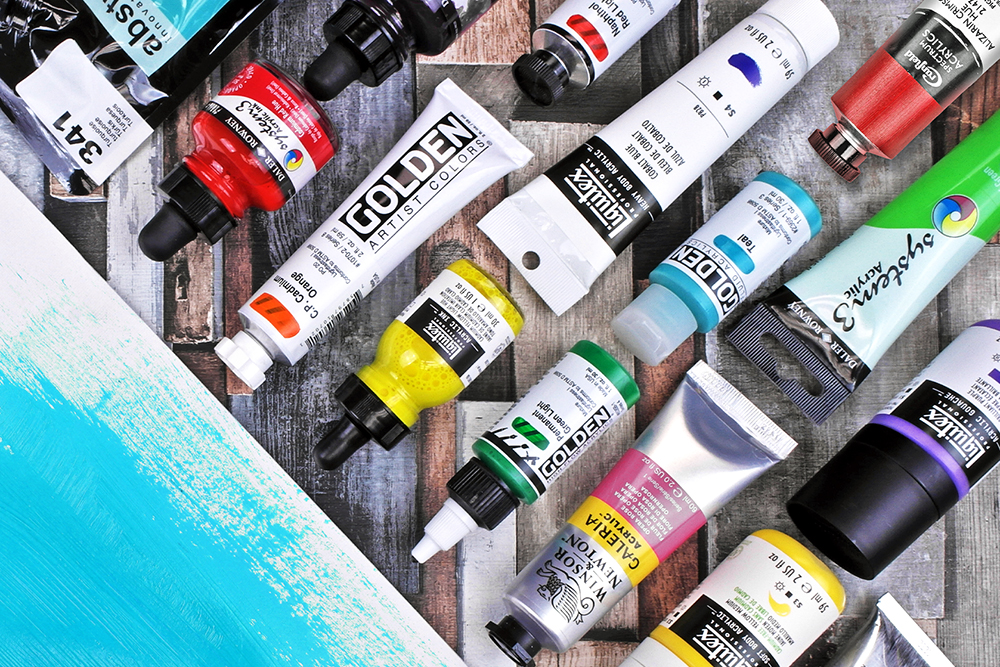
If you’re just starting out then the amount of choice in paints, brushes, palettes and surfaces can quickly become confusing! If you have worked with oils or watercolours you may find them a little strange to begin with. Don’t worry – our tips and tricks will have you painting like a pro in no time!
How to Paint with Acrylics
The working properties of acrylic paints make them very different in use than oils or watercolours. The amount of variety in paint consistency and mediums makes them the most versatile painting media. Artists who share a studio space, or who find oil paints too harsh may prefer acrylics for their quick drying, water-based formula. Mistakes are easier to rectify, as the paint is touch dry and can be worked on top of quicker. The versatility of acrylic mediums also allows you to work with them in a similar way to oils (by using slow drying mediums) and watercolour (using inks or soft body colour with flow aid mediums). Although most of your painting tool kit will remain the same there are some special considerations you will have to make if you are painting in acrylics.
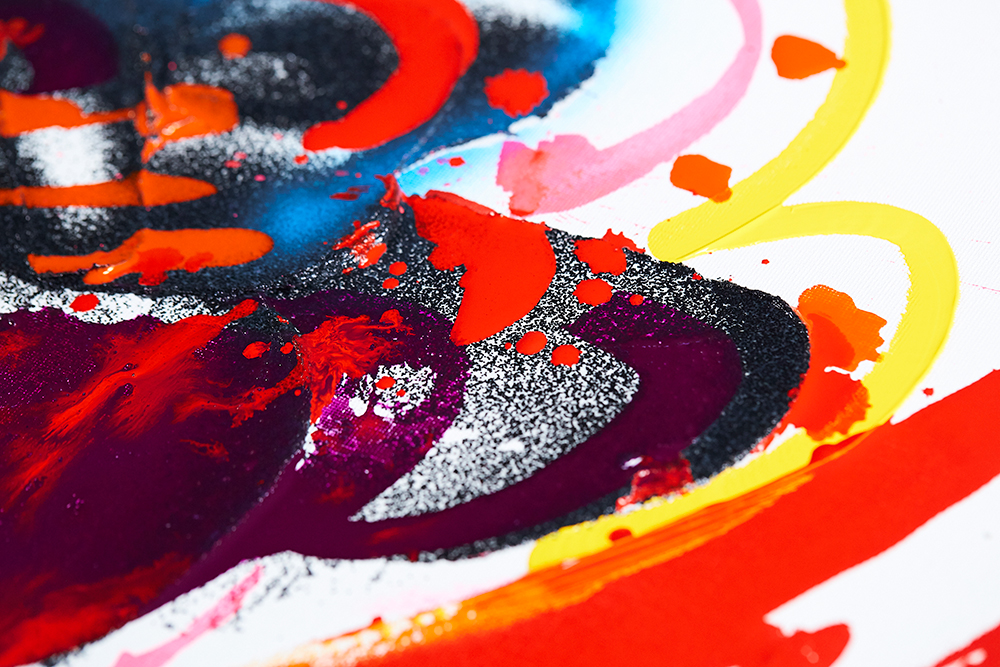
Setting yourself up with some basic materials for acrylic painting can seem overwhelming, but there are only a few essentials that you will need to get started.
A good selection of colours should be first on your list. If you’re a complete beginner we stock a variety of sets that contain a great selection of mixing colours. A set of brushes in a variety of shapes and sizes is a must. It will allow you more freedom over the mark making in your painting. You will also have the question of your painting surface – should you choose stretched canvas, canvas boards or paper? You may find it handy to have a few cloth rags, paper towels on hand. Keep two water pots to separate your clean and dirty water.
Our hints & tips below will help you select the perfect materials for your work. All our starter materials are available to buy on our website!
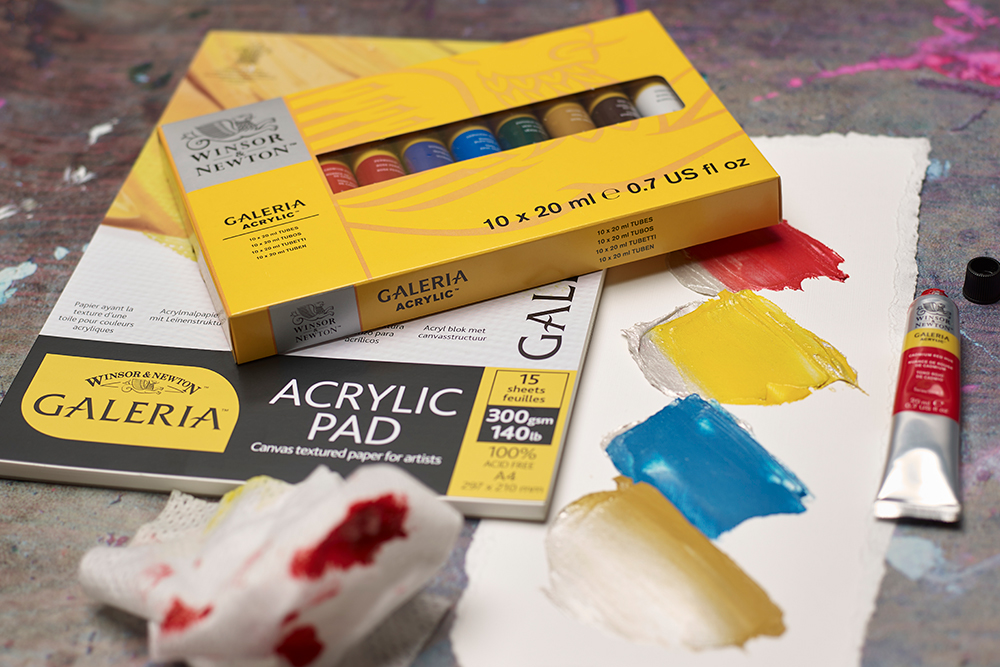
Picking Your Paints
There are many brands of acrylic paints – but not all paints are alike! Before settling on a particular make it is important to know the differences between the type of acrylics available.
Student Quality vs Artist Quality Acrylics
Acrylics can be broadly separated into two categories – Student Quality and Artist Quality.
Artist Quality Acrylic Paints
Artist grade typically contain a high ratio of single pigment colours and fewer additives or extenders. The more pigments you put into your mixes, the more likely they are to become flat, muddy and lifeless. Single pigment colours are much sought after to make colour mixes clean and clear. Artist paints also tend to let the unique characteristics of each pigment shine through. This means you will find that some colours dry to a different finish, are a slightly different texture and have varying degrees of opacity.
What is a Series Number?
Series numbers are used to separate paints by cost. The higher the series the more expensive the colour – so Series 4 colours will cost more than Series 1. The price difference does not indicate any difference in quality. Rather that some colours are more costly to manufacture – so whether you’re buying from Series 1 or Series 4 the quality will be the same.
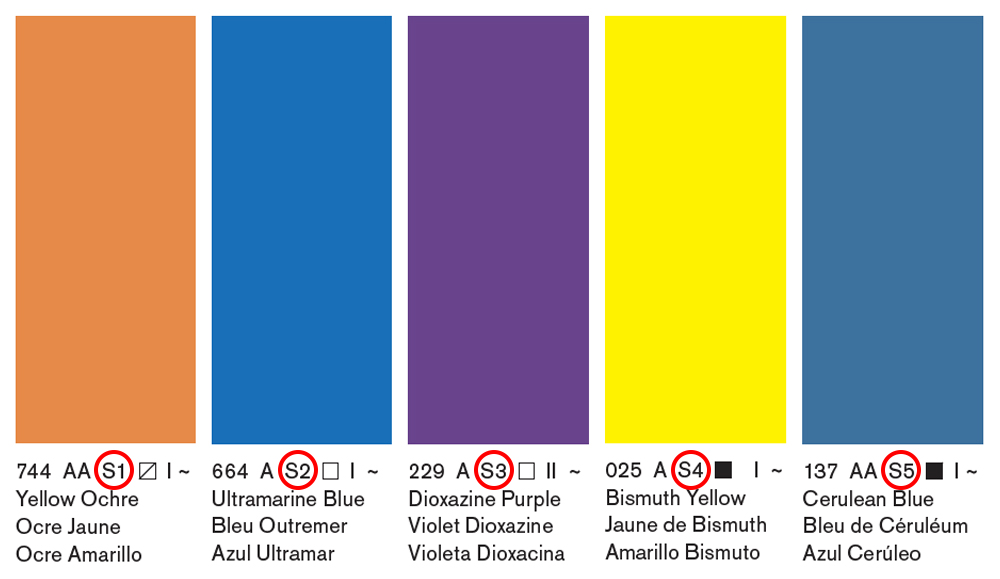
The following brands fall into the artist quality category:
- Winsor & Newton Professional Acrylics
- Liquitex Professional Acrylic Colour (Including Heavy Body, Soft Body, Acrylic Gouache, Acrylic Markers & Ink)
- Golden Artists’ Acrylic Colours (Including Heavy Body, Fluid, High Flow and Open)
While these paints fall under ‘artists’ grade, there are slight variations in their quality. Spectracryl are the lowest of the artist grade. Winsor & Newton and Liquitex are on par with each other. Ther very best quality acrylics are Golden.
Student Quality Acrylic Paints
Student grade paints keep their prices economical by replacing costly pigments with less expensive alternatives. They also contain higher levels of additives and extenders. For example higher series pigments – like Cadmium and Cobalt – command a high price in artist grade paints. In student ranges you will see them replaced with ‘hues’ – like Cadmium Red Hue and Cobalt Blue Hue. These substitutions offer similar properties and colour to the genuine pigments, but without the associated price tag.
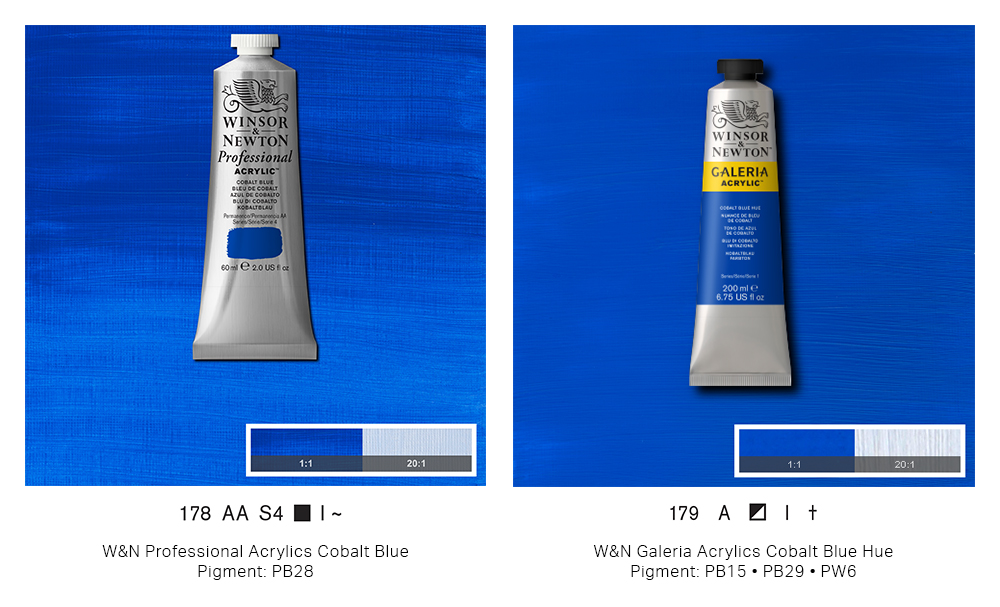
Most student ranges also contain additives so that all colours dry to a uniform finish and texture. This can be beneficial to beginners as there is no need to worry about any variations in sheen or handling. The following brands fall into the student quality category:
- Winsor & Newton Galeria Acrylic Paint
- Daler Rowney System3 Acrylic Paint
- Sennelier Abstract Acrylic Paint
Choosing Between the Different Viscosities of Acrylic Paint
Acrylic paints are available in different viscosities. It is always best to opt for a paint with a suitable consistency for its intended application. For example, you can use water or medium to thin Heavy Body Colour, but you may notice spots where the paint isn’t as vibrant. Be careful of using too much water in your mixes. Using too much can compromise the integrity of the binder, which will cause adhesion problems. If you require fluid paint, it is advisable to choose a paint with a low viscosity formulation. Do not think that a more fluid acrylic paint is just the heavy body version watered down! Regardless of their consistency, artists’ acrylic paints contain a high volume of superior pigments.
Heavy Body Acrylics
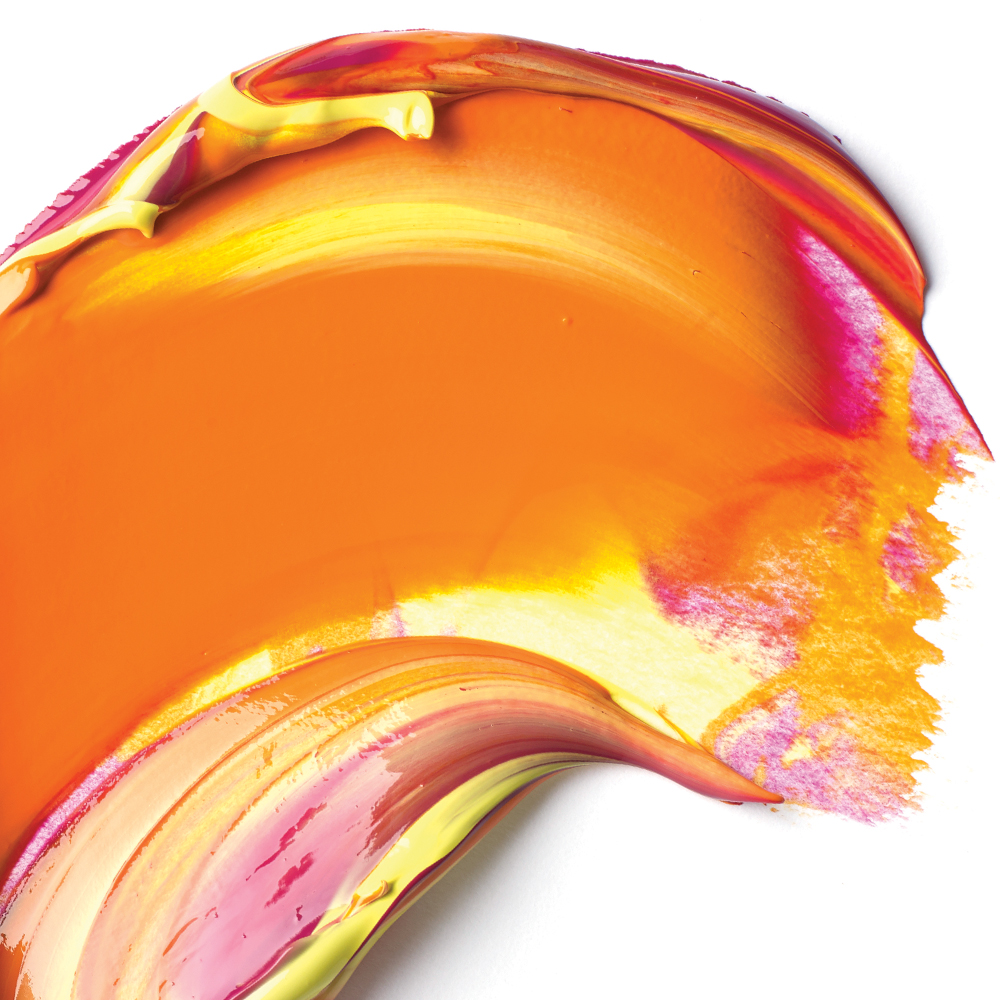
Heavy Body Acrylics have a thick, high viscosity texture. They are great for artists who look to retain the texture of their brush strokes. Or artists who work with a thick impasto technique. The stiffer the hair of the brushes you use, the more texture will be in each stroke. These paints can be applied with a brush or a knife and give your work an almost sculptural quality.
Soft Body Acrylics
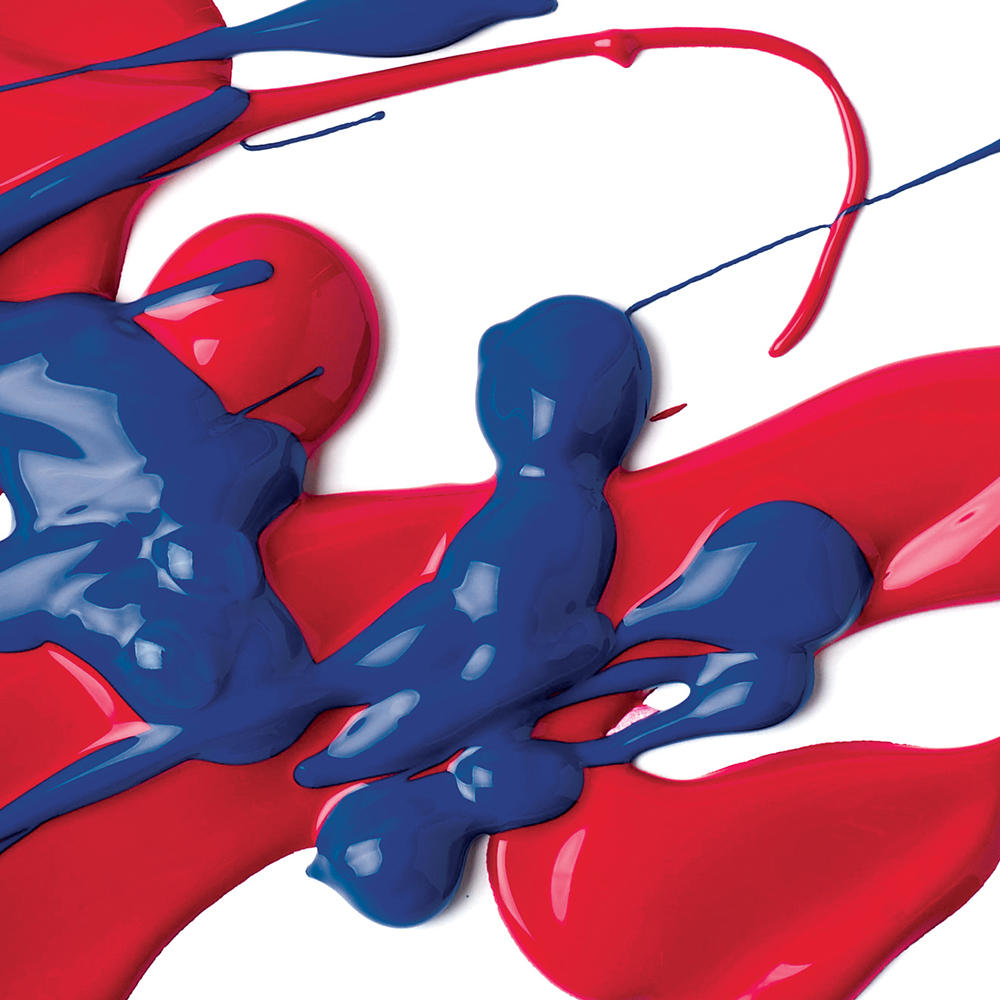
Soft Body Acrylics have a consistency similar to heavy cream. Their low viscosity means colour application is smooth. They offer the same pigment load as Heavy Body, so your colours will be bright and vibrant. This paint will retain subtle brush strokes, however the effect isn’t as pronounced as it is in heavy body acrylics. They are perfect for all kinds of techniques, whether you’re using them straight from the bottle or mixing with mediums. They are popular for using with fluid art techniques such as acrylic paint pouring. Their fluid characteristic makes them easy to blend and to paint in fine detail.
Both Liquitex and Golden offer these more fluid acrylic colours. Golden Fluid and Open Acrylic colours offer textures that fall between Heavy Body and Soft Body. Their Open acrylic range are not quite as thick as heavy body, but firmer than a traditional soft body acrylic. Fluid Acrylics are lower viscosity than Liquitex Soft Body, and are more free flowing across your painting surface.
High Flow Acrylics & Acrylic Inks
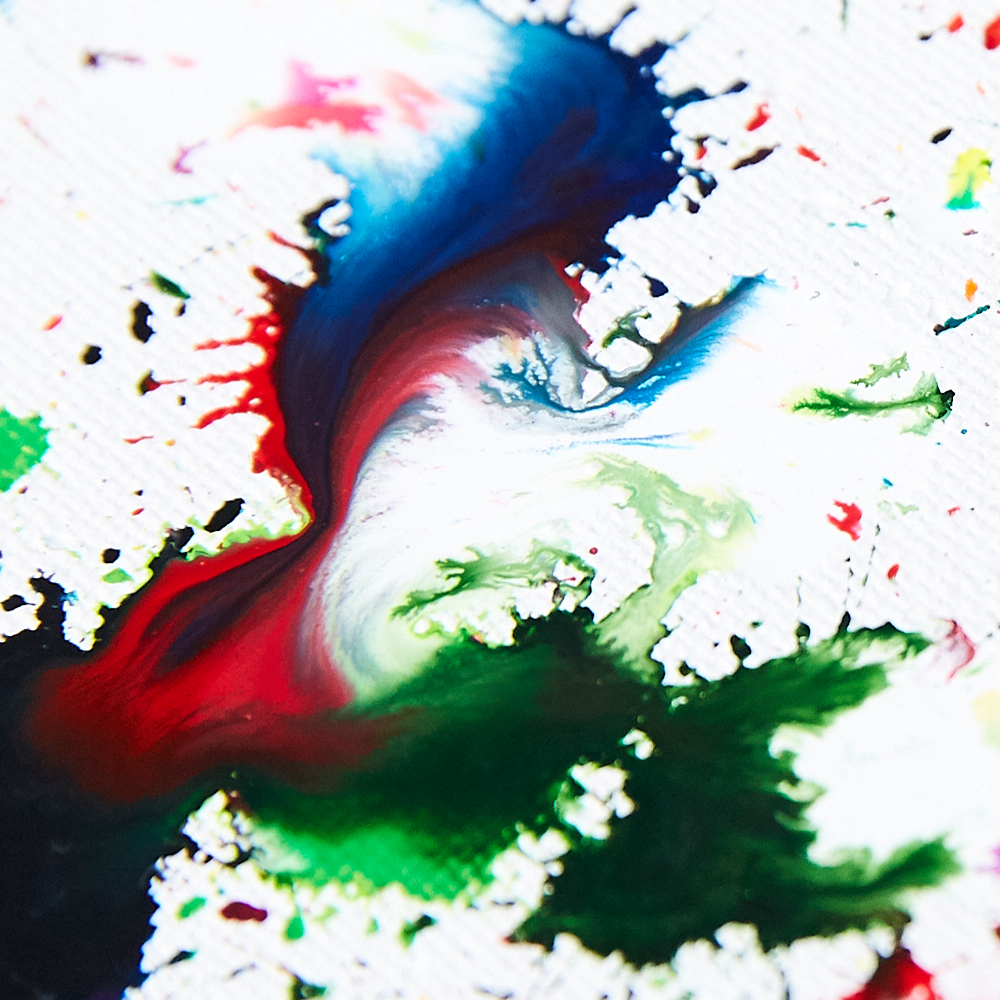
Acrylic Inks are the most fluid acrylic colour. Inks are made using finely ground artists pigments in a fluid acrylic emulsion. They are easy to apply with the pipette or nozzle lid of the bottle. Use them to create watercolour-like effects, poured artwork or for airbrushing. They are also suitable for use with dip pens and refillable markers for a pen and ink technique. Like paint, acrylic can be split into different quality grades. Daler Rowney System 3 Acrylic Inks fall into a student grade bracket. Liquitex Professional Acrylic Inks and Daler Rowney FW Acrylic Inks are higher quality, while Golden High Flow acrylics are very highest quality.
Acrylic Gouache
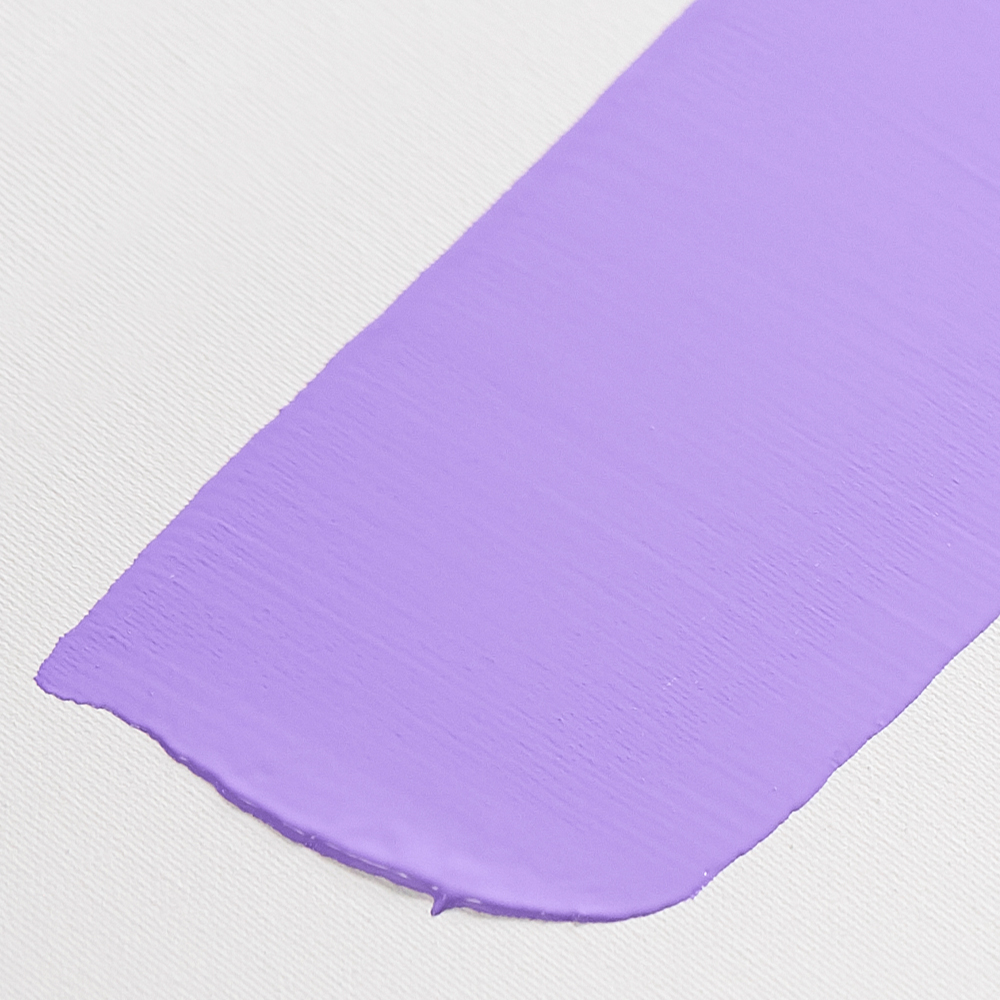
Acrylic Gouache is one of the newer additions to our website. They offer all the benefits of a traditional gouache paint but with the added benefit of an acrylic binder. Layer paint without risk of activation the colour below. They dry to an opaque, flat, matt finish that doesn’t retain brush strokes. Illustrators and designers favour them as they are suitable for reproduction.
Acrylic Paint Markers
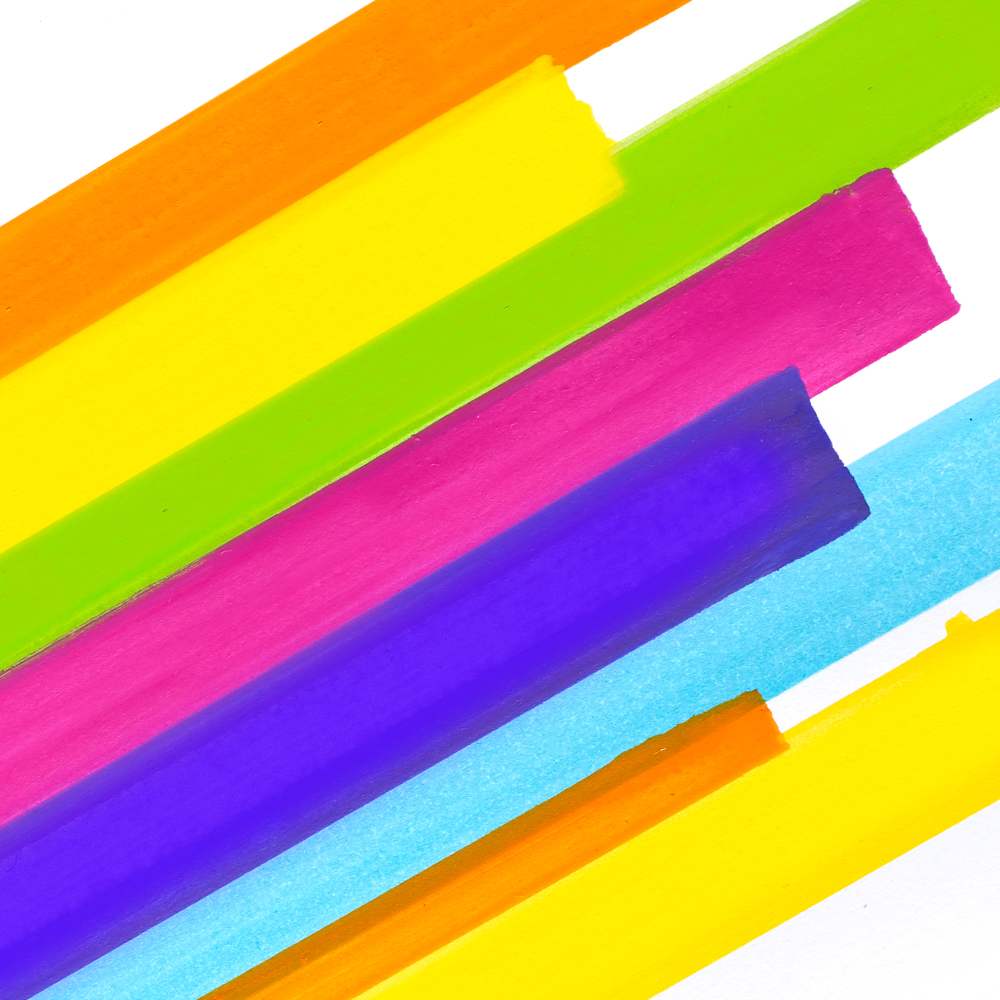
Acrylic Markers contain a free flowing acrylic paint that allows you to apply colour with the precision of a pen. These markers typically work with a pump action – press and release the nib repeatedly and colour will saturate the nib – then apply strokes of colour. You can create expressive drips and splashes by over-saturating the nib with paint.
Slow Drying Acrylic Paints
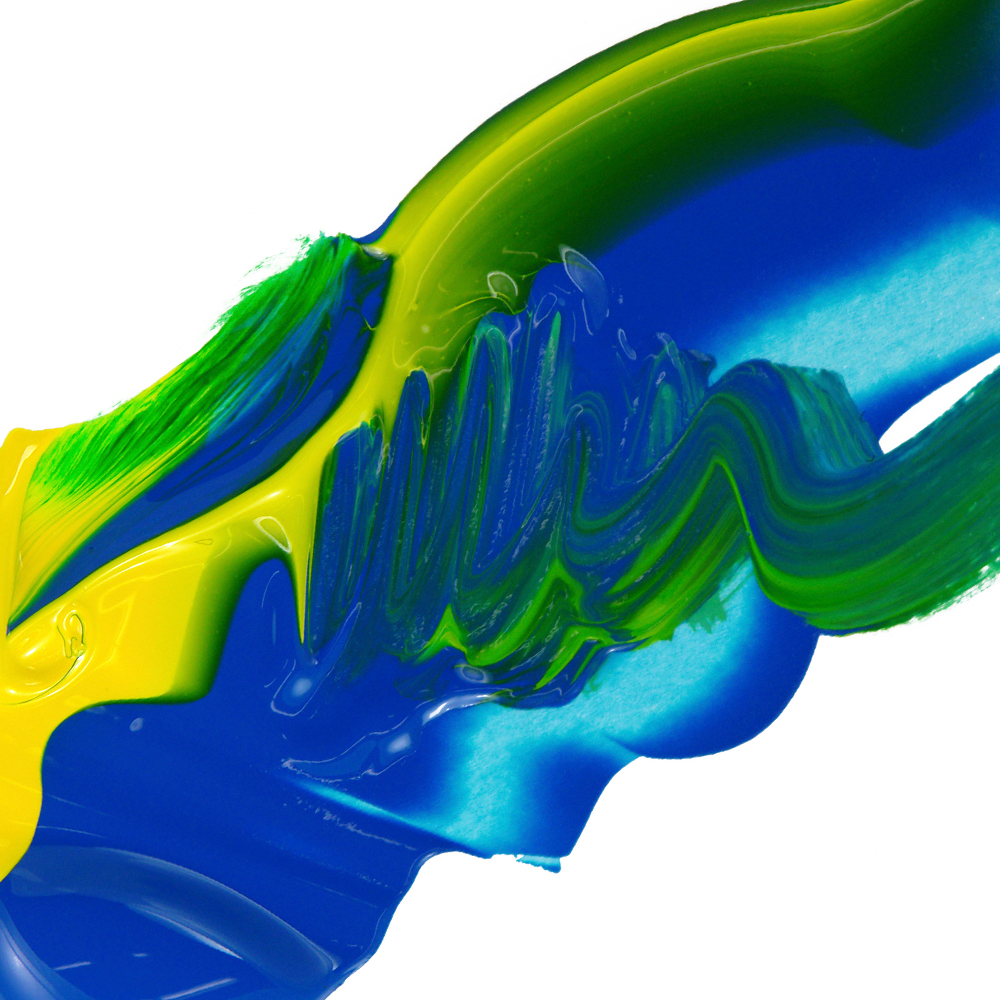
Slow Drying acrylics (Golden Open Acrylic Colours) have an extended open time. This property allows acrylic artists to work with techniques usually restricted to oils. Best used in thin applications, these paints are not suitable for impasto techniques. If used in a stay wet palette their colour can remain usable for weeks – reducing the chance of paint wastage.
With Student grade colour there is less choice in terms of consistency. Typically available in one formulation, student grade paints don’t have the same buttery qualities as an artists’ heavy body acrylic. Daler-Rowney System3 Fluid are the most fluid of our student acrylics. Daler-Rowney System3 Original are closer to the texture of a soft body paint. Galeria have a smooth, free flowing consistency that is a little on the thicker side. Abstract Acrylics have a creamy-to-thick consistency, that is closer to the consistency of heavy body. Daler-Rowney System3 Heavy Body are the thickest of all our student grade acrylics.
Picking a Selection of Colours
Once you have settled on the paint you are buying, it will be time to consider the range of colours in your palette. If you are starting out then it may be advisable to buy a set. Generally these contain a good selection of mixing colours that will be enough to get you going – some even have a few accessories.
We have plenty of acrylic painting sets for beginners that include a mix of primaries, a convenient secondary or two, plus some earth shades and the usual black and white. These colour selections will allow you to explore colour mixing but also give the freedom of being able to use colour straight from the tube.
Some sets, like the Sennelier Abstract Acrylic Primary Set, do have a minimal mixing palette using only primaries plus black and white. While some artists enjoy the challenge of painting with a restricted palette, the lack of colours can be daunting for a beginner.
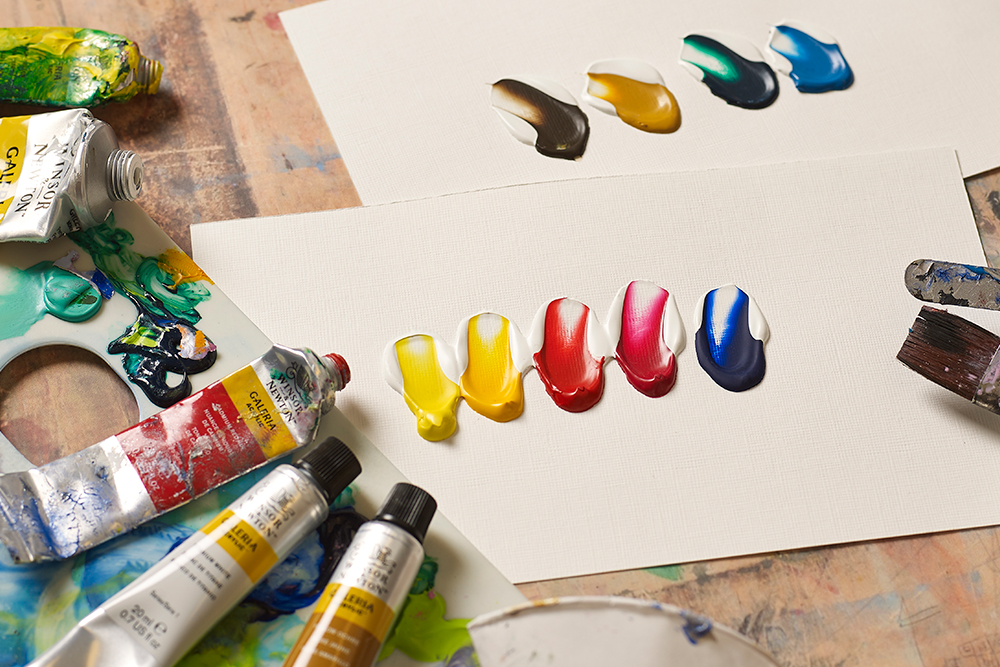
If you are looking to buy your own colours separately then you will have full control over the colours to choose. Usually we would recommend going with one or two variations on each primary colour, a green for convenience, a few earth tones and the usual black and white. We do have some more information on selecting your own palette of acrylic colours on our website.
Browsing Brushes
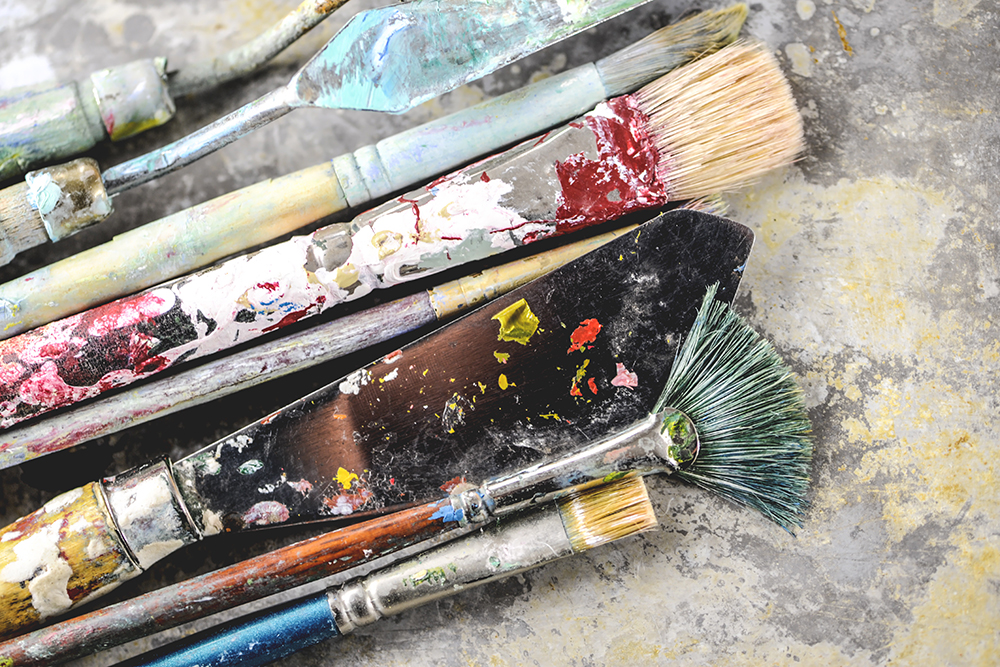
The type of brushes you choose is mostly down to personal preference and your own painting technique. There are a few considerations to make before you take the plunge and invest in a good set of brushes.
Long Handled and Short Handled Brushes
Long handled brushes are popular with artists who use the distance between them and their canvas to create bold, expressive strokes. Working with a long handled brush is great for a loose, gestural painting style. These brushes aren’t suited for fine detail painting, as the length of the handle makes it difficult to get close to your canvas. Creating quick, loose, compositional ideas on a large scale is easier with these brushes.
Short handled brushes are suitable for fine detail or small scale work. Their short handle means you can work much closer to your canvas, making adding those fine finishing touches easy. They are the preferred choice for artists who favour a precise, detailed technique.
Synthetic and Natural Hair Brushes
Acrylic paints can be used with all kinds of brushes, whether they are natural hair or synthetic. If you are working with heavy body colours then you may find it easier to work with a natural bristle (hog) or firm synthetic hair. The stiffness of the hair makes it much easier to work your paint and apply it to the canvas. You may notice that the stiffness of hog hair decreases with use over time. Water softens the bristles, so make sure that your brushes are not sitting in water too long and you will extend their workable life.
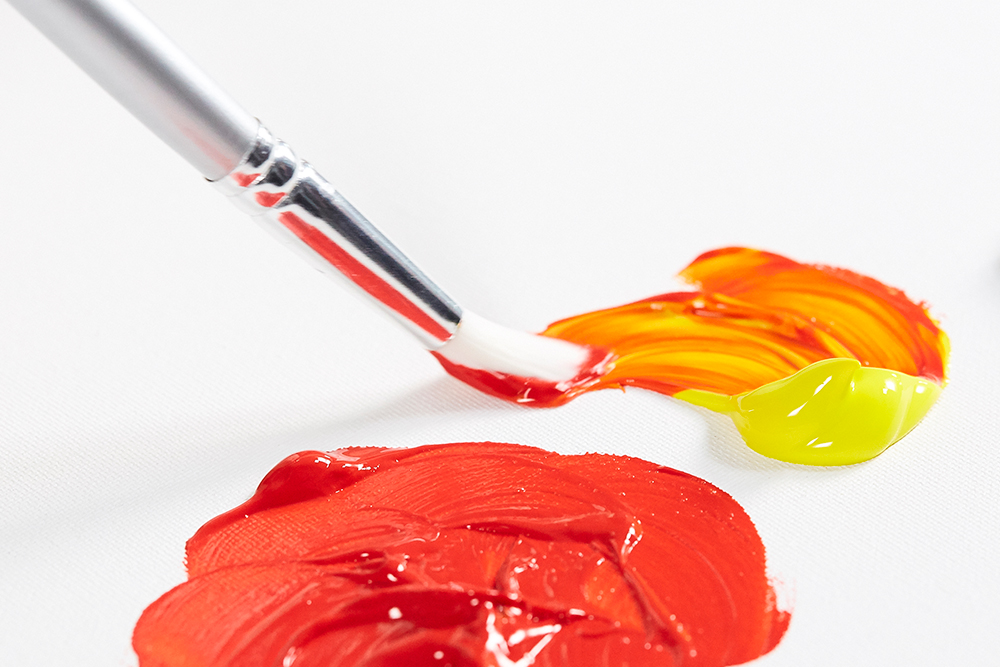
Soft Body colours and inks can be used with springy natural hairs and softer synthetics. Synthetic fibres are remarkably resilient and can withstand more wear and tear than a natural brush.
Brush Shapes
There are many types of brush shapes available. Perhaps the most heavily used is the standard Round brush. These brushes have a round profile that tapers to a point for detailed work, but larger sizes can also be used for greater coverage. Short Flat (also known as Bright) have a square edge and are great for quick coverage or for creating angular, geometric shapes. A Long Flat has a bit more length, but has the same style of stroke as a short flat. Filbert brushes have a slightly rounded, flat profile – a shape which is good for blending or even to paint petals. Rigger brushes are similar to a round, but have much longer fibres. These long thin brushes are great for painting continuous line work like ship rigging – which is where they get their name.
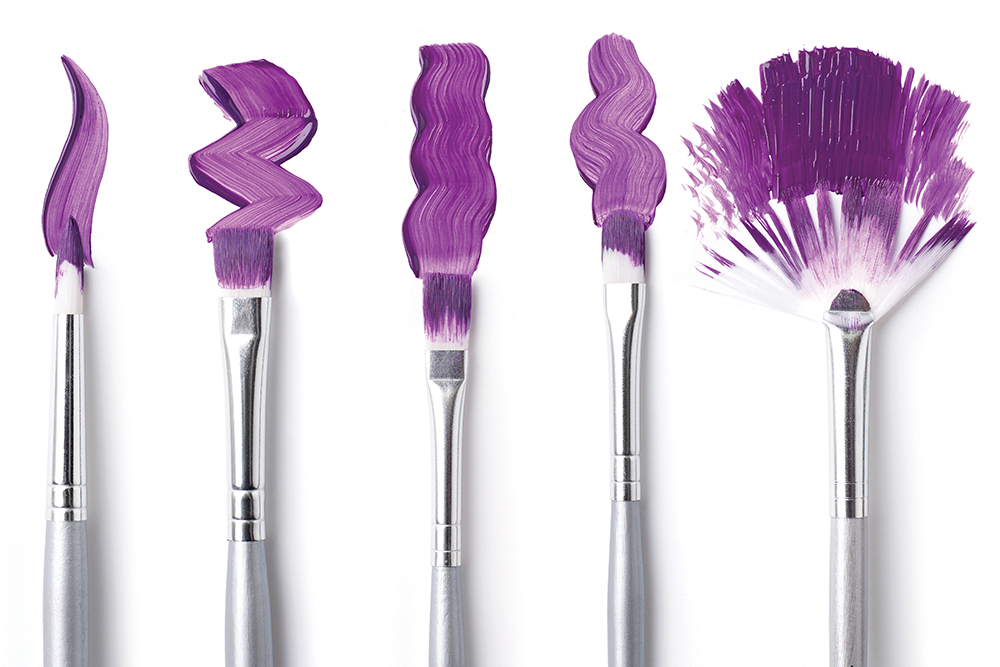
Other unique brush shapes are perfect for specific techniques. There are large flat brushes for varnishing and glazing, fan brushes that can be used for blending. We also stock specialist brushes – like the Terry Harrison Masterstroke and Liquitex Freestyle Large Scale – which are ideal for achieving certain textures and techniques. We sell a variety of acrylic brush sets for beginners with a good selection of brush shapes and sizes to get you started.
Cleaning your Acrylic Painting Brushes
It’s worth noting that any dried acrylic stuck in your brushes can ruin them very quickly. So it’s important to wash your brushes thoroughly after every painting session. Acrylics essentially form a plastic film once they have dried, so removing dry paint is very difficult. The beauty of acrylics is that cleaning requires just soap and warm water. You should clean your brush until the water is clear to ensure all paint residue is removed. Do not leave your brushes tip down in water as it can distort and bend the brush hairs. Once cleaned, reshape the tip and leave to dry horizontally. Get into the habit of doing this regularly after every session and you’ll find that your brushes last much longer.
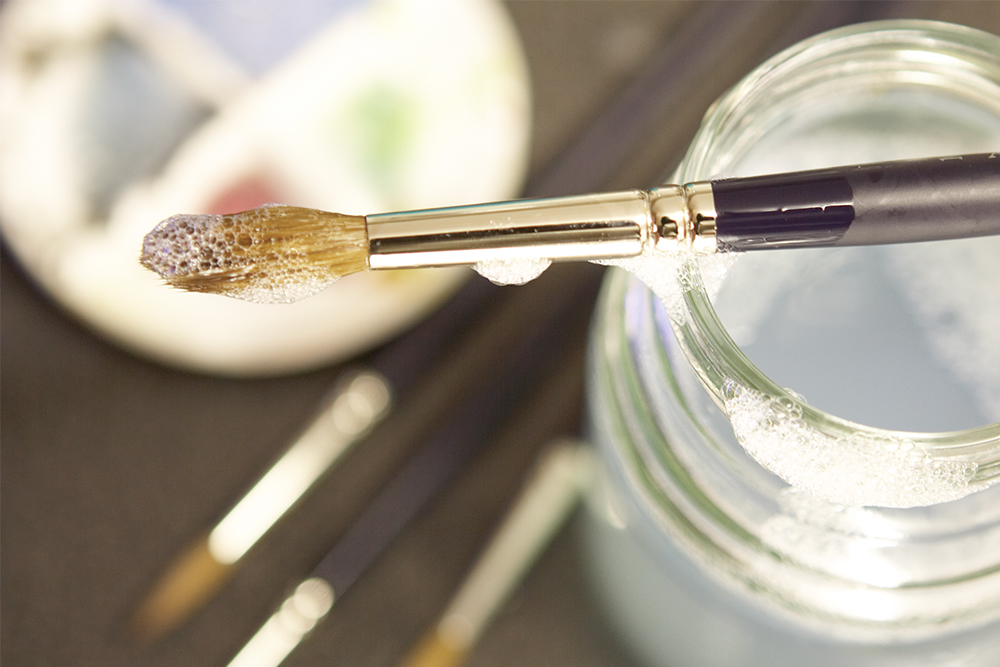
If you have a stiff, dried up brush that you are trying to rescue you may be able to remove the paint with Masters’ Brush Cleaner and Preserver, Zest-it Acrylic Brush Cleaner and Reviver or Loxley Brush Cleaner and Preserver.
Visit our How to Clean Acrylic Paint Brushes article for more detailed instructions on how to clean your acrylic painting brushes!
Palette Preference
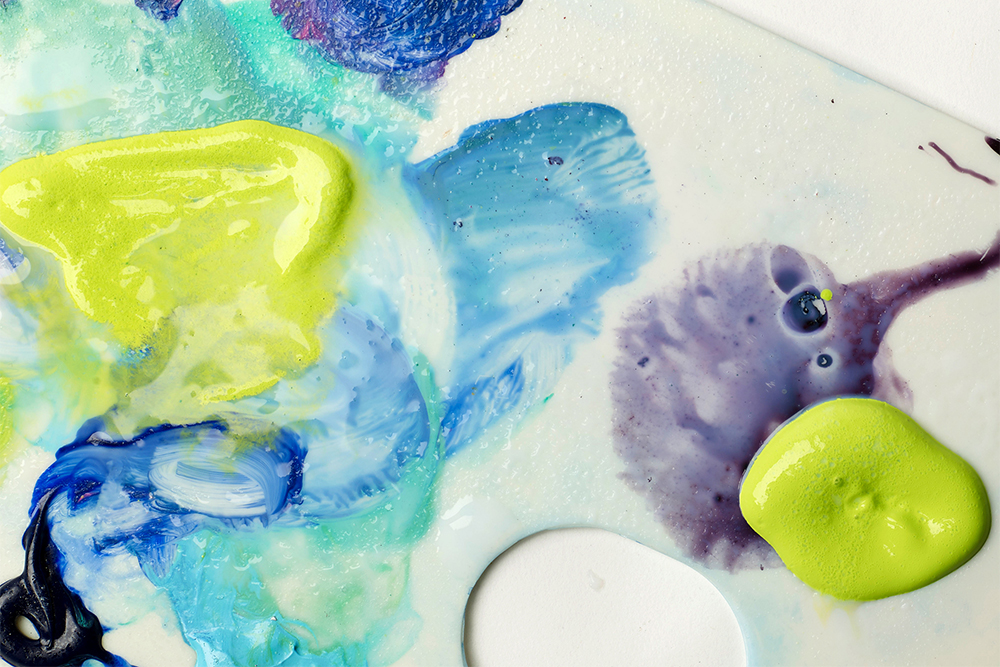
Any non-stick surface on which you can easily separate and mix your colours makes a great acrylic painting palette, whether you use a purpose-made tray or a large plate. If you are working with thick colour you may prefer to work on a large, flat palette. These styles of palettes have a large working area, perfect for creating large patches of mixed colour. If you are using paint with a lower viscosity a palette with wells will probably be useful. Using a large flat palette with low viscosity paint could mean your paint mixes run into each other, if not off the actual palette! Wells make it easy to contain your inks without contaminating one another.
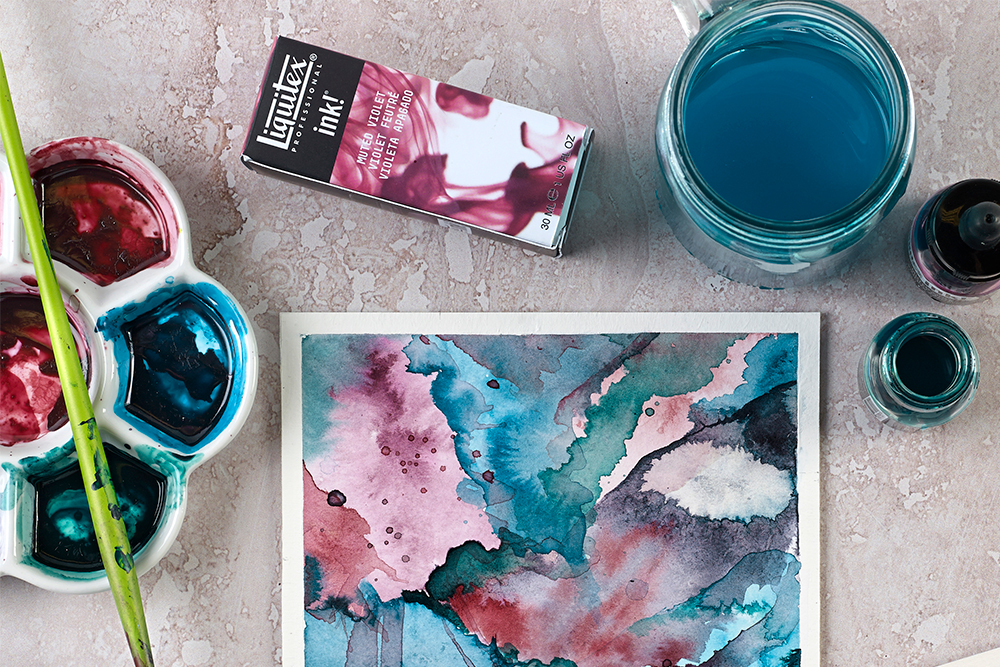
Many acrylic artists like to work with stay wet palettes that keep their paints fresher for longer. These types of palettes have an airtight seal, which prevents your colours from drying out. Usually they will come with a sponge layer which when wet increases the humidity in the palette. Liquitex Palette Wetting Spray can be used if you don’t have one of these palettes but need something to keep your paints fresh.
You may find a full size palette too cumbersome for painting when you are out and about – whether it be plein air or in the classroom. In these conditions, some artists prefer to use a disposable tear off palette. These one use palettes are made of an impervious parchment film which can be discarded at the end of each session.
When you are squeezing paint onto your palette it’s important to consider the scale of your work and how much colour you will need. Even though stay wet palettes will keep your mixes fresh, it’s best to only squeeze out as much colour as you need to prevent wastage.
Preparing Your Area
When it comes to starting your painting it’s important to set up in an area with enough open space and good lighting. The scale you work on will mostly be down to personal preference. If you’re a beginner a large, empty canvas can be daunting, so starting on a small scale may be better. Conversely working on a large scale can feel freeing if you have the space available. We’d all love a big studio space with high vaulted ceilings but many of us can only work as large as our spare rooms will allow!
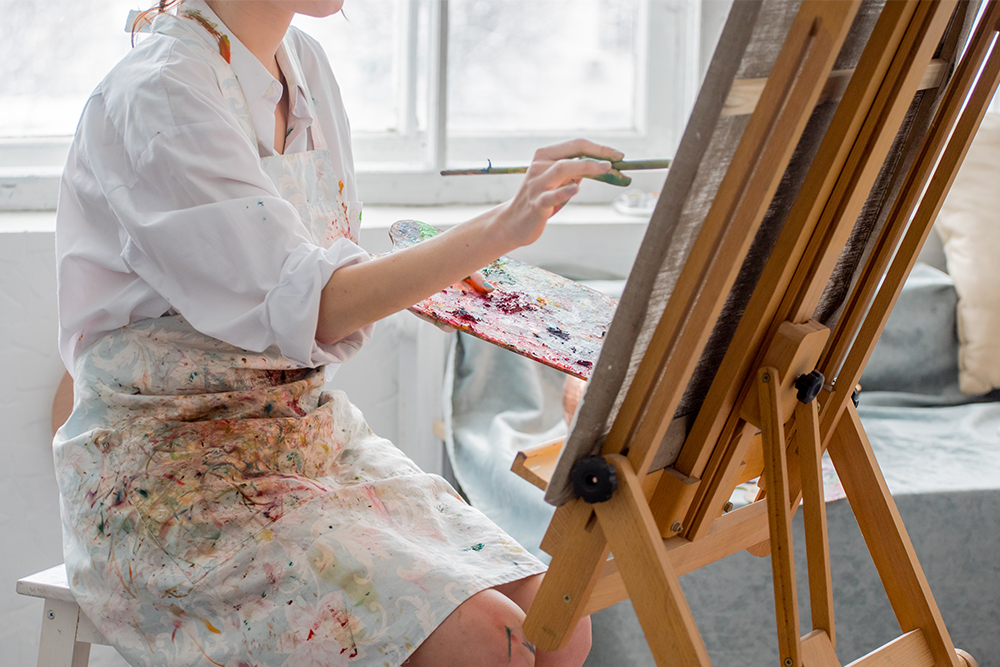
Choosing Your Painting Surface
Stretched Canvas is perhaps the most common painting surface. It has a long history of use, and offers a good support to ensure your painting will stand the test of time. Today’s artists have much more choice in the surfaces they paint on.
If stretched canvases are too bulky then you may prefer to work on canvas board or painting panels. These surfaces are much thinner, so are easier to store if you don’t have much storage space available.
If you’re doing preliminary paintings, or don’t want to work on an expensive canvas surface straight away, then canvas textured papers offer an affordable option. These papers are prepared for use with acrylics and come in bound pads. Plus they’re easy to transport and store like a standard sketchbook. Although they do not offer the same feel as canvas, they are pressed with a canvas texture to mimic some of its working properties.
Canvas Pads containing primed canvas fabric – Loxley or Fredrix – are also available if you prefer the genuine texture of canvas over paper. They offer the feel of canvas but without the storage issues.
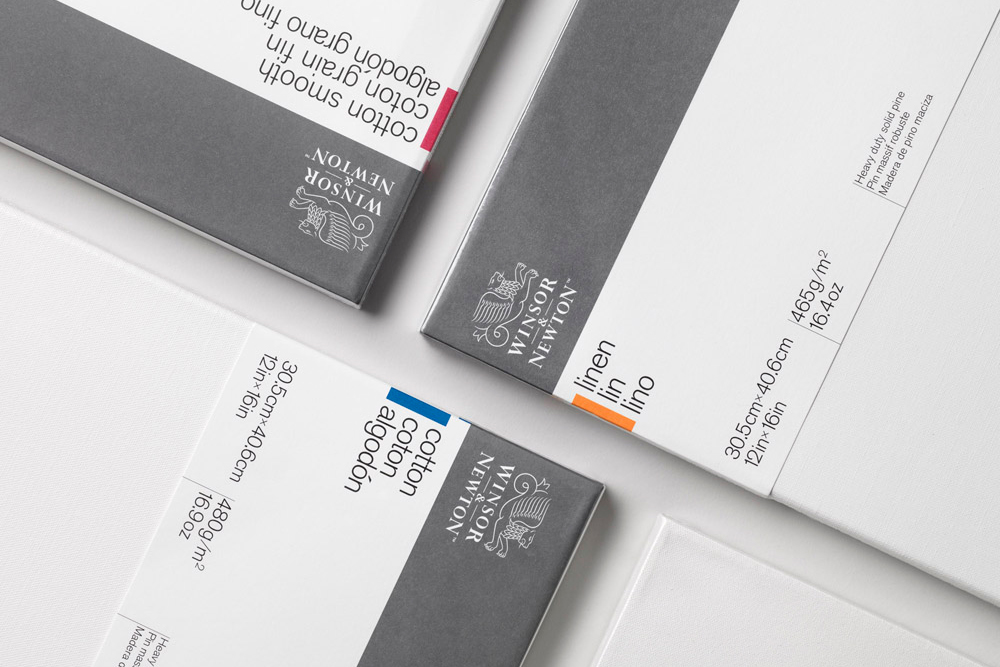
All our canvases, boards and acrylic painting papers are primed – ready for painting as soon as they are in your hands. If you are starting with unprimed paper we would recommend coating the surface with a coat or two of Gesso. Applying gesso will create a layer with a bit of ‘tooth’ for your paints to adhere to. Without a gesso layer you may find that the surface of your painting cracks or peels over time.
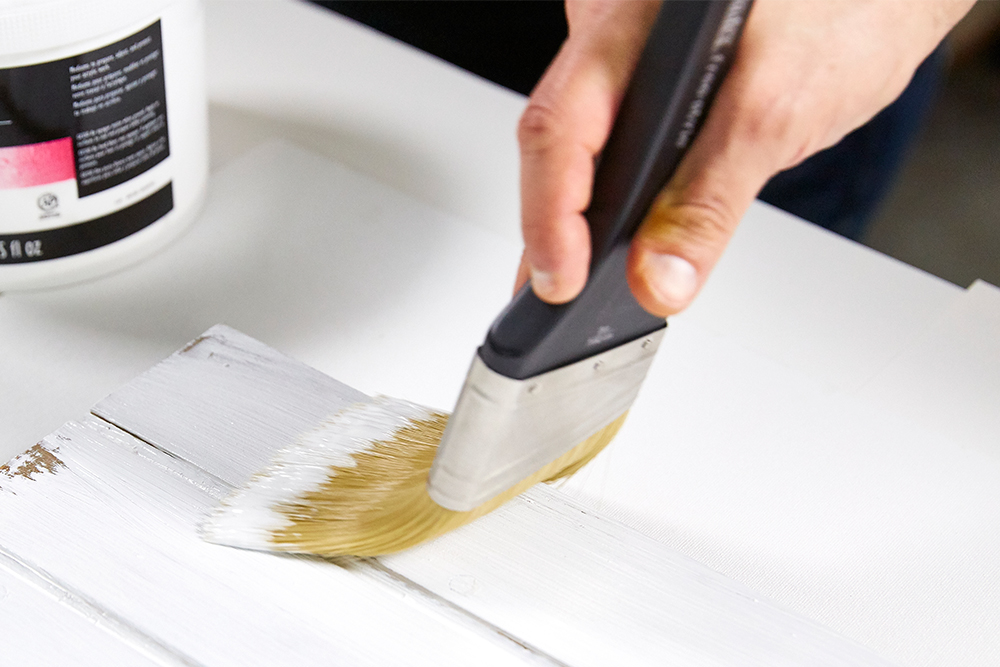
Additional layers of Gesso can be added to a pre-primed surface to change its absorbency and texture. Adding a few layers of Gesso and sanding back between layers can help smooth your surface.
Varnishing Your Finished Painting
Adding a final coat of varnish is the perfect finishing touch for your acrylic painting. Varnish provides a durable layer that will give your painting extra protection against damage. Some acrylic painters also choose to add an isolation coat between the painting and varnish layer. This allows the varnish to be removed for cleaning without damaging the paint layer beneath. In these circumstances you would need to ensure that you are using a non-permanent, removable varnish – for example, soluvar. Isolation layer or not, it is important that your painting is left to dry thoroughly before varnishing.
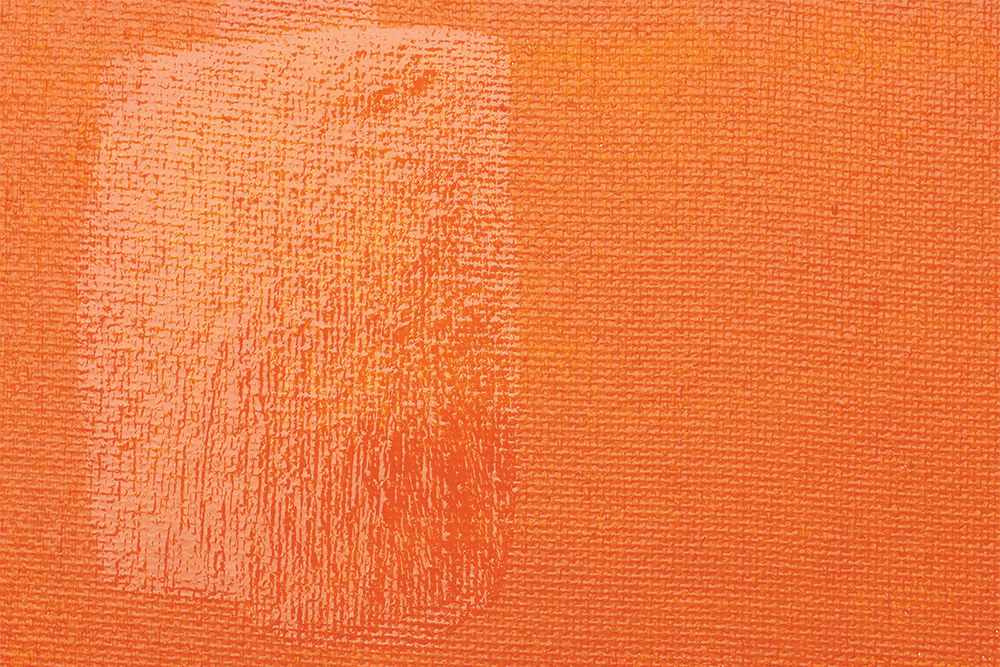
Acrylic paints are quick drying, but thicker applications will take longer to dry. It is usually advisable to wait between 72 hours and two weeks, depending on the thickness of application. If you are applying more than one coat they will need to dry thoroughly before subsequent coats are added.
Disposing of Waste Water and Acrylic Solids
When you’ve finished your painting session it is important to clean your workspace. Waste water can be left to evaporate, leaving behind acrylic solids that can be processed at your local waste disposal. Winsor & Newton, Liquitex and Golden offer some great advice for disposing of your paint waste in a way that will create the least environmental impact. Not only is following this advice better for the environment – it also means you waste less material!
Get Creative!
There aren’t many hard and fast rules when it comes to acrylic painting. Sometimes the best approach is to experiment and see where your work takes you. Other artists prefer to do some preliminary sketches or paintings to help keep their focus. Once you’re settled on your composition, your sketches can be scaled up onto canvas. This can be done using a grid transfer method, with scaling dividers, pantographs, tracing paper, tracedown or even a projector.

As you build in confidence you may want to start incorporating acrylic painting mediums into your work. Mediums open up loads of new creative possibilities. Use them to change sheen, alter consistency, texture and even modify them for specialist painting techniques. They allow for endless experimentation, allowing you to apply paint to all kinds of surfaces in so many ways. Why not try fabric painting, create beautiful poured paintings or create brilliant contrasts on a black gesso ground?
If you’re stuck for ideas for your first painting project why not take a look at our acrylic painting tutorials? Whether you think you might be the next Vincent Van Gogh, or you can see that your creative skills leave little to be desired, keep going. Flex that crafty muscle and enjoy yourself!
Ready to start?
You can buy all your acrylic painting materials to get you started right here on ArtSupplies.co.uk. If you need some supplies, we have a variety of acrylic painting sets for beginners here.




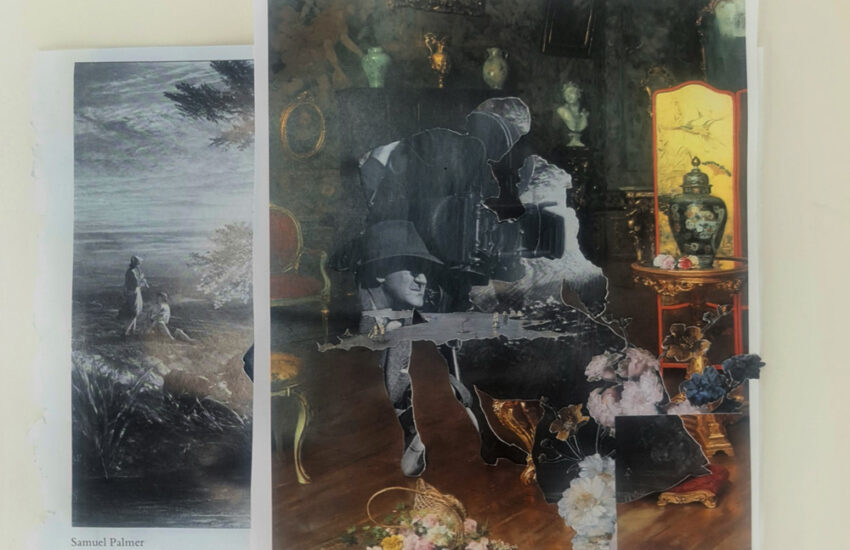

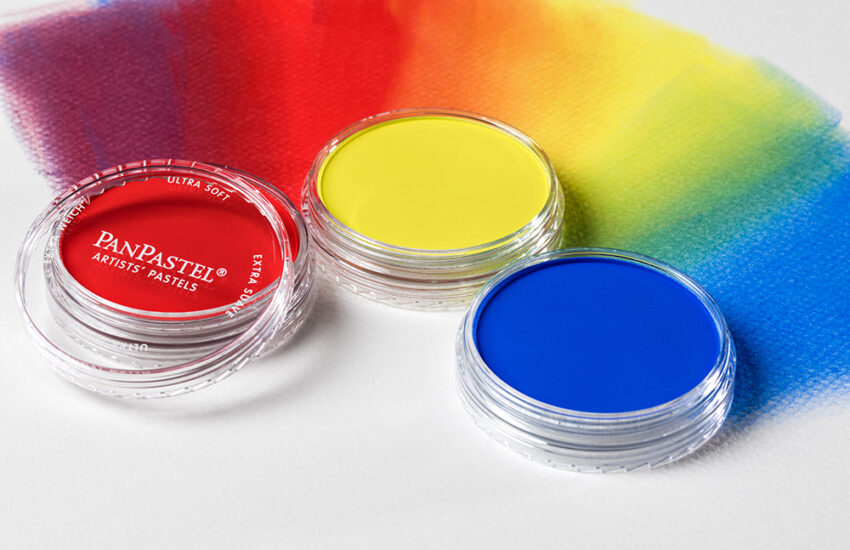


Help please!
I have these shiny spots on my canvas from wiping off mistakes, I guess? But now it’s very smooth and the paint doesn’t seem to hold to it.. I’ve tried sanding, painting over with thin layers of white paint and gesso but it’s still smooth and shiny. Can this be fixed or is it better to start over? Thank you
Hi Christine, sorry to hear you are having problems. Dealing with shiny or slick spots on a canvas can be challenging, but it’s not necessarily a reason to start over. You could try these steps to fix these spots:
1.Lightly Sand the Area: You’ve mentioned trying sanding, but make sure you use very fine-grit sandpaper (220 grit or higher). Lightly sand the shiny areas to create some texture for the paint to adhere to.
2.Clean the Surface: After sanding, clean the surface thoroughly with a damp cloth to remove any dust and debris. Let it dry completely.
3.Apply a Clear Acrylic Medium: Before using gesso or paint, try applying a clear acrylic medium (matte or gloss, depending on your preference). This can help create a surface that is more receptive to paint. Let it dry completely.
4.Use Gesso: Apply a coat of gesso over the entire area, including the shiny spots. Use multiple thin layers, allowing each layer to dry completely before applying the next. This helps build a consistent surface for painting.
5.Sand and Repeat if Necessary: If the surface is still too smooth, you may need to repeat the sanding and gesso application process. Sometimes it takes a few cycles to get the surface ready.
Hope this helps, good luck
A friend of mine has a ceramic poppy purchased at the Tower of London. Unfortunately it has been broken into several pieces. I have managed to re-assemble it but am at a loss as to what to paint it with. I am leaning towards Acrylic but the advice I have is to use spirit based acrylic not water based. The poppy has a shiny glazed surface, except where I have applied filler, and I would welcome your advice.
Thank you
Dennis
Hi Dennis. Thanks for your comment. While acrylic paints can be used on ceramic, I’m not sure they would work on this project and we don’t have any information about what the poppies were originally painted with and how they have been finished. Looking at Paul Cummins website, the artist who made the poppies, he does advise that any broken poppies be taken to a local ceramic repair company to get a professional finish close to the original.
Thanks for taking the time to reply Tanith. Sorry for the delay but I couldn’t find where I posted, not good with computers I’m afraid. I will look at Paul’s website but will probably end up taking a shot at the painting. Nothing to lose as it was probably scrap if I hadn’t tried.
Thanks again.
Dennis
Best site with the info that I just needed
This is so useful thanks for this stuff
This is so useful – thanks for sharing all of this. I have definitely been doing a few things wrong!
I am interested in painting and I don’t know how I can start I start painting at the home I have a lot of mistakes your article help me a lot to fill my mistake
Great tips here for beginners. Thank you
Just discovered this excellent resource. I am sure I am going to learn some new and useful tips even though I have been using acrylics for several years, thank you
Can i use acrylic pens for perfect details of face
Hi Kanika, acrylic paint markers can be used for adding in small details. You should probably opt for a marker with a fine tip, rather than a broad tip – depending on the size and level of detail in your work. If you are working in very fine detail you may find it easier to apply delicate, more intricate marks with a very small paintbrush.
Hi u seemnto be really knowledgeable. Im trying to do a 1 brush technique on paper then eventually on material. Do u or anyone else know what sort of consistency i need. I normally use face paint and draw body art
what a superb website for people like myself who are just dipping their toes in the world of artistry!!